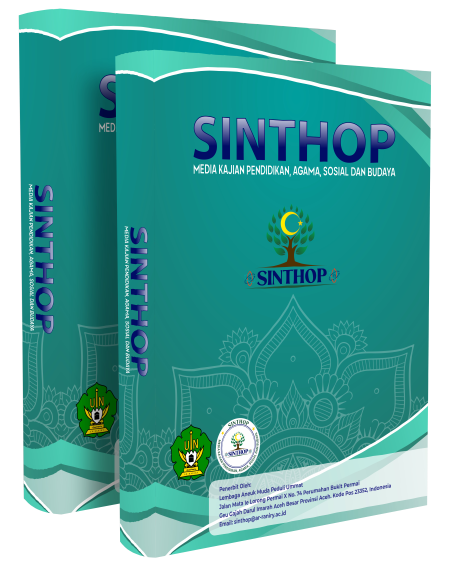Exploring Negative Human Traits: A Thematic Tafsir of The Qur’an
Abstract
This article explores the intricate Qur’anic discourse on human nature, emphasizing the dualism of human existence and the potential for both moral elevation and descent. Employing thematic Tafsir, the study elucidates how the Qur’an portrays human beings as creatures of complex constitution—body, soul, and intellect—crafted in the most perfect form but susceptible to degradation to the lowest states. It further investigates negative human traits such as miserliness, impulsiveness, and injustice, providing a deep dive into traditional exegeses and contemporary interpretations. By analyzing these traits through the Qur’anic lens, the paper offers insights into the ethical and moral challenges humans face and the divine guidance provided to overcome these. Methodologically, the research synthesizes Qur’anic verses and scholarly interpretations, enriched by insights from Sufism and psychology, to construct a comprehensive understanding of human emotional and moral states. The findings suggest that awareness and self-reflection are crucial in mitigating negative traits and fostering a moral and spiritually aligned life.
References
Agus Haryo Sudarmojo. (2013). Benarkah Adam Manusia Pertama: Interpretasi Baru Ras Adam Menurutal-Quran dan Sains. Mizan Digital Publishing.
Ar-Rifa’i, M. N. (1999). Ringkasan Tafsir Ibnu Karsir JIlid 2 Diterjemahkan oleh Syihabuddin. Gema Insani Press.
Ashfahani, R. A. Z. D. (2017). Kamus al-Qur’an-al mufradatul fi gahribil Qur’an Jilid 2 : Penjelasan lengkap makna kosakata asing (ghorib) dalam al-Qur’an. Pustaka Khazanah Fawa’ id.
Bagus Takwin. (2018). Psikologi Naratif : Membaca Manusia Sebagai Kisah. Jalasutra.
Fazal, K., & Saleh, J. (2022). Ummatan Wasaţan dalam Pancasila Perspektif Tafsir M. Quraish Shihab. TAFSE: Journal of Qur’anic Studies, 7(1), 77. https://doi.org/10.22373/tafse.v7i1.13197
Hamka. (n.d.). Tafsir Al-Azhar.
Hardianto Rahman dan Ismail. (2017). Ilmu Sosial dan Budaya Dasar Islam (Terintegrasi Nilai-Nilai Keislaman). CV. Latinulu.
Hasbi, M. (2018). Konsep Jiwa dan Pengaruhnya dalam Kepribadian Manusia (Studi atas Tafsi>r al-Mishba>h Karya Quraish Shihab). Jurnal Studi Ilmu-Ilmu Al-Qur’an Dan Hadis, 17(1), 45. https://doi.org/10.14421/qh.2016.1701-03
Jujun S. Suriasumantri. (2006). Ilmu dalam Perspektif: Sebuah Kumpulan Karangan Tentang Hakikat Ilmu. Yayasan Obor Indonesia.
Mu’tasim Hasan, M. (2015). Metode Umat Wasatîyah dalam al-Qur’an. MUTAWATIR, 1(1), 47. https://doi.org/10.15642/mutawatir.2011.1.1.47-59
Muhammad Ab. (2014). Penyakit Hati & Pengobatannya. PENA.
Muhammad Tholhah Hasan. (2005). Prospek Islam Dalam Menghadapi Tantangan Zaman. Lantabora Press.
Muhtadi. (2020). Sifat Keluh Kesah Dalam Tafsir Al-Azhar Kajian Surat Al-Ma’arij Ayat 19-22. Universitas Islam Negeri Raden Intan Lampung.
Mutiara Tri Julifa. (2022). Kikir Dalam Perspektif Al-Qur’an. Hadharah: Jurnal Keislaman Dan Peradaban, 16(2). https://doi.org/10.15548/h.v16i2.4808
Ridho, A. R., & Hariyadi, M. (2021). REFORMULASI ETIKA DAKWAH BERBASIS KOMUNIKASI PROFETIK DALAM AL-QUR’AN. KOMUNIKE, 13(1), 53–78. https://doi.org/10.20414/jurkom.v13i1.3351
Shihab, M. Q. (2001). Tafsir Al-Mishbah: Pesan, Kesan dan Keserasian Al-Quran. Lentera Hati.
Sinta Nur Haeni. (2021). Dusta Dalam Al-Qur’an (Kajian Semantik Atas Kata Kadzib, Ifk Dan Zur). Universitas Yudharta Pasuruan.
Syafi’i, A. H., & Syaoki, M. (2018). KARAKTER MANUSIA DALAM PERSPEKTIF AL-QUR’AN SURAT LUKMAN. KOMUNIKE, 10(2), 89–98. https://doi.org/10.20414/jurkom.v10i2.673
Syekh Muhammad Mutawalliy asy-Sya’rawi. (1411). Tafsir sya’rawi jilid 3. Dar al Akhbar al Yaum.
Zatil Iesmah Binti Mohamad Yusof. (2020). Problematika Emosi Manusia Dalam Perspektif Al-Qur’an. Universitas Islam Negeri Ar-Raniry.
Copyright (c) 2024 Muslim Djuned, Khalis Akbar, Furqan Furqan

This work is licensed under a Creative Commons Attribution-ShareAlike 4.0 International License.
Authors who publish in SINTHOP: Media Kajian Agama, Sosial dan Budaya agree to the following terms:
- Authors retain copyright and grant the journal right of first publication with the work simultaneously licensed Attribution-ShareAlike 4.0 International (CC BY-SA 4.0) that allows others to share the work with an acknowledgment of the work's authorship and initial publication in this journal.
- Authors are able to enter into separate, additional contractual arrangements for the non-exclusive distribution of the journal's published version of the work (e.g., post it to an institutional repository or publish it in a book), with an acknowledgment of its initial publication in this journal.
- Authors are permitted and encouraged to post their work online (e.g., in institutional repositories or on their website) prior to and during the submission process, as it can lead to productive exchanges, as well as earlier and greater citation of published work. (See The Effect of Open Acces)









.png)

.png)
.png)
.png)


